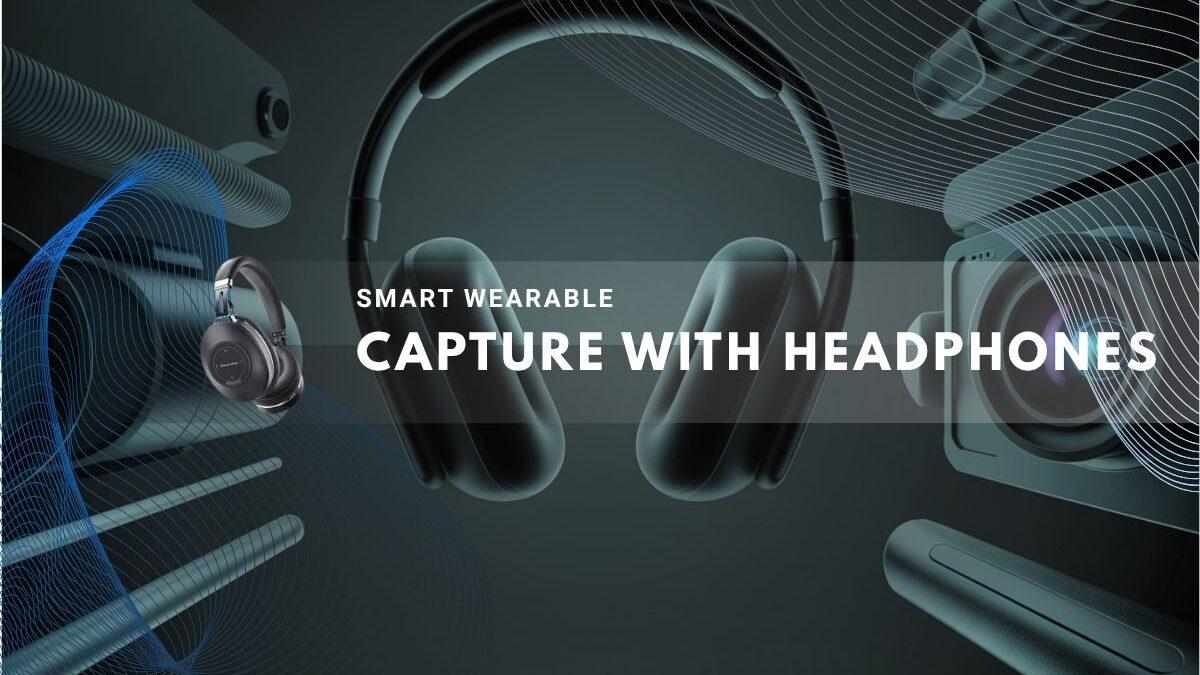MusicCam by VibeLens embeds a high-definition camera and AI features into open-ear, bone-conduction headphones. It delivers hands-free point-of-view capture without the social friction of camera glasses.
Rationale for Headphone Form Factor
Most adults do not wear prescription glasses, and smart glasses have seen limited adoption despite years of development. Headphones, however, are ubiquitous across activities—commuting, exercising, even swimming—making them a natural platform for integrated cameras.[1][2][3]
Design and Construction
MusicCam’s wrap-around frame houses bone-conduction transducers that transmit sound through cheekbones, leaving ear canals open. The 50-gram headset remains secure during movement and supports extended wear.[1]
A rotating pod on the right earpiece contains:
- Sony IMX219 image sensor (32 MP equivalent)
- f/2.0 aperture lens with 73° field of view
- ±30° tilt adjustment for framing shots without head pitching[2][1]
Technical Specifications
| Feature | Specification |
|---|---|
| Video Resolution | 1080p at 30 fps; 2K at 30 fps |
| Codec and Bitrate | H.264; up to 10 Mbps |
| Field of View | 73° wide; ±30° adjustable |
| Stabilization | Six-axis gyroscope stabilization |
| Waterproof Rating | IPX8; rated to 20 m without external housing |
| Battery Capacity | 600 mAh; fast charge to 80% in 15 min, 100% in 30 min |
| Recording Time | Video: up to 2.6 hours; Audio: up to 15 hours |
| Audio Technology | Bone-conduction open-ear transducers |
| Microphones | Dual environmental noise cancellation mics |
| Connectivity | Bluetooth 5.4; Wi-Fi 4 |
| Storage | 32 GB internal buffer |
| Weight | 50 g |
| Dimensions | 140 × 98 × 62 mm |
| Materials | PC, ABS, glass fiber |
(Specifications sourced from presale pages and reviews).[4][5][2][1]
Camera Performance
The IMX219 sensor and f/2.0 lens capture sharp, share-ready footage. Six-axis stabilization smooths head movement for cinematic output without gimbals. Waterproofing to 20 m enables underwater use in pools and shallow dives.[2][1]
Audio and Voice Capture
Bone-conduction design prioritizes situational awareness, sacrificing some low-end depth for safety during activities like cycling or running. Dual ENC microphones filter wind and background noise for clear voice calls and audio recording.[6][1]
AI Capabilities
On-device AI features include:
- Object and landmark recognition
- Real-time language translation
- Voice-activated queries for weather and navigation
These mirror smart-glasses functions while leveraging the larger battery and processor headroom of a headphone design.[7][8]
Use Cases
Users benefit in scenarios such as:
- First-person video capture during sports and adventure
- Hands-free photography and live clips
- Real-time translation while traveling
- Voice-controlled information retrieval without screen handling
Crowdfunding Success and Pricing
MusicCam launched on Kickstarter at an early-bird price of $199 (50% off the $399 MSRP). The campaign has raised over $550 000, exceeding its funding goal by more than 11 000% with over 3 000 backers as of late September 2025. Shipping to backers is slated for December 2025.[9][10]
